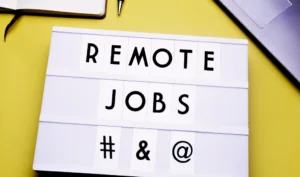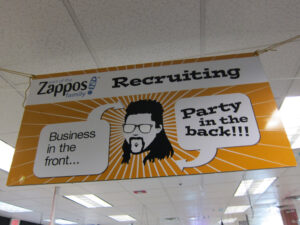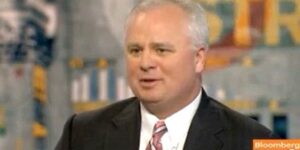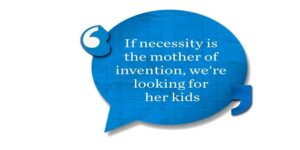
How to Humanize Your Employer Brand on Social Media
What is an Employer Brand? Employer branding is a fundamental part of every company’s identity. It’s not just about the products and services you offer.

What is an Employer Brand? Employer branding is a fundamental part of every company’s identity. It’s not just about the products and services you offer.

In traditional work settings, attracting the right talent at the right time through onsite recruitment is challenging enough. But now with the rise of remote

Managing a company has always been complicated. But the recent explosion of remote and hybrid work is making things infinitely more complex, especially when it

Video is more important than ever for the vast majority of businesses trying to stay open during the pandemic, which you can see just by
In this Corner Office article, Cyndy Trivella, Events Manager with TalentCulture, spoke with Dee Ann Turner, VP Corporate Talent with the iconic brand, Chick-fil-A. In
Slack, an internal communications platform designed to improve workplace communications, grew to a $1.1 Billion valuation within eight months of launching to the general public.
For more insights on recruitment marketing best practices employed by the world’s leading organizations, get a free download of SmashFly’s Recruitment Marketing Report Card for
Recruitment marketing has never been more important. Why? Today’s hiring economy is highly complex and competitive–and finding top talent is harder than ever. Unemployment is
The TalentCulture #TChat Show is back live from this year’s HR Technology Conference & Exposition in Las Vegas on Wednesday, October 21st, 2015, from 1-2 pm
Branding gives your organization the required visibility in the market. Traditionally, the concept of branding was limited for the all-round promotion of the corporate houses;
This week we talked about how to identify, grow and market your employer brand. No matter how you slice it, it’s really a lesson on research
On July 8th we discussed how to create a company culture that rocks. Our guest was my friend Jim Knight, a leading training and development expert who worked with Hard
This week the TalentCulture #TChat Show was live from the 2015 SHRM Annual Conference & Exposition in Las Vegas – where we discussed the brilliant HR profession of
Not everyone’s up for focusing an employer branding. Even though I’m a hard core “importance of employer branding advocate”, I get that there are many
This week Stacy Zapar, Founder of Tenfold, and recruiting strategist, trainer & advisor joined us to discuss how employee engagement empowers the employer brand. I always
The balance of power is shifting in the employer/employee relationship. What does it mean for the future of work? The #TChat crowd weighs in
The balance of power is shifting in the employer/employee relationship. What does it mean for the future of work? The #TChat crowd weighs in

Google received over a million applications last year. For the fifth year running, it was named #1 on Fortune’s list of the Top 100 Companies

Zappos, an online retailer, has been one of the most talked about companies in the HR and recruiting space mainly because of their unique practice

New research indicates that employees tend to love their employers — but don’t feel it in return. What can we do about that? The #TChat crowd weighs in

How would you describe your ideal employer? Here’s one factor that many job seekers overlook — but it has potential to make all the difference.

How can employers win the hearts and minds of today’s workforce? The TalentCulture community takes a closer look — for better or worse.

What does it take to meet top tech talent on today’s terms? Kevin Grossman weighs in after Dice exchanges insights with the #TChat crowd

What happens when nearly 50,000 job seekers speak out about their candidate experience? Great insights surface! Let’s discuss at #TChat events

Mobile recruiting is revolutionizing HR. Now it’s time for mobile hiring to step in where the mobile candidate experience leaves off…